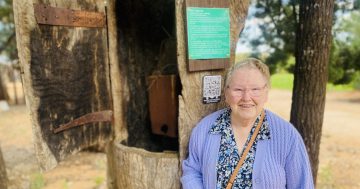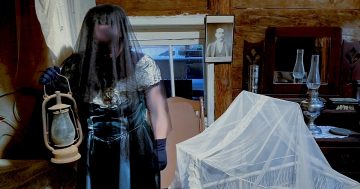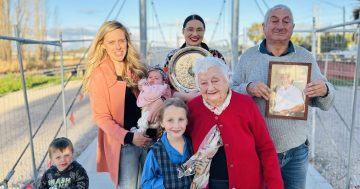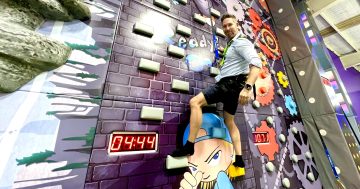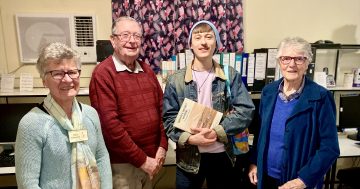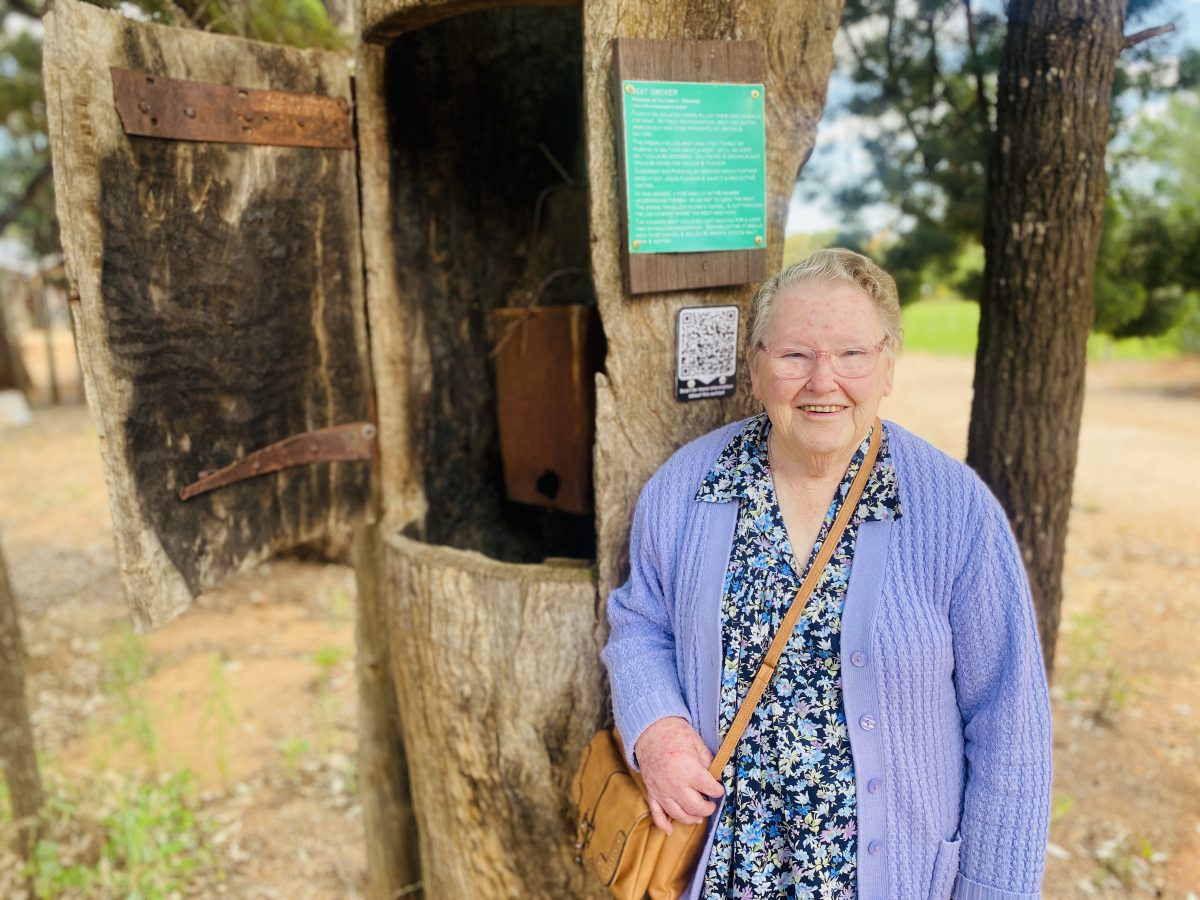
Marjory Longford next to her grandmother’s meat smoker. Photo: Oliver Jacques.
An 83-year-old Narrandera woman has set the record straight on the origin of an unusual 19th century meat smoker that has been preserved at Griffith’s Pioneer Park Museum.
Marjory Longford recounted the history of the cooking device when on a Baptist Care-organised tour of the museum on Tuesday 29 November.
The smoker is made from a hollow log cemented to the ground and connected to an underground tunnel three metres long, which leads to a firebox smoker. There is a hook inside the smoker for the meat to hang on. It was used by those who lived on remote farms, as cured meat could be hung inside the log chimney without the need for refrigeration.
“Many years ago, I was on a tour and [the then Pioneer Park curator] told me that this log smoker came from another Hill family. I said, ‘Excuse me, but this came from my grandmother’s farm down near Bringagee Station’. I told her it was the Hill family farm. [The curator said] ‘OK, I’ll change that’ and she did. Good on her, [the plaque] now says it came from my family,” Ms Longford said.
“My grandmother’s name was Cecila Ann Hill, but she preferred to be called Annie. She lived with her husband William James Hill and their children on a farm up towards Wyvern Station.”
Wyvern Station is located between the towns of Darlington Point and Carrathool, in the western part of the Riverina. Today, it is home to a number of shearing sheds.
In the late 1800s, the Hill family would kill their own animals for meat, then ‘cure’ it by rubbing in salt for about a week, until no more salt could be absorbed. They’d sometimes add brown sugar for colour and flavour.
In the smoker, a fire was lit in the nearby underground firebox, so as not to overcook the meat. The smoke would travel along the tunnel and out through the hollowed log chimney where the meat was hung. The entire rare device was transported to Pioneer Park Museum in the early 1970s.
“It was originally down near the boat shed in my farm. I think my cousin from Narrandera organised for it to come here [to the museum],” Ms Longford said.
Ms Longford grew up in Narrandera and moved to Griffith in the late 1960s, where her husband John set up his panel beating business. She recalls visiting the site of Pioneer Park with him just before the museum was opened, when there was just the one attraction.
“We were driving around Griffith on New Year’s Day in 1969, and we saw just the one cottage – there was nothing else at all.”
Ms Longford saw the museum’s first ever transported building – Fairview Cottage, a drop log constructed homestead built on a sheep run near the town of Tabbita in 1886. The cottage is a typical example of early settlers’ homes of this district prior to irrigation.
The timber was logged on the property and built by the owner Mr Alfred Hill [a different Hill family to the one that owned the meat smoker]. On taking up the property, Alfred was said to have looked out over his land and stated that he had a fair view of the hard work ahead, hence the property was named ‘Fairview’.
Pioneer Park Museum, on Remembrance Drive, features a number of other original historic buildings that were transported to the site. It is open 10 am to 4 pm weekdays and 10 am to 3 pm on weekends. Entry cost for adults is $12, concession $10, children $8 and a family of two adults and three children is $30. As a special offer, Griffith locals can currently enter for free if accompanied by an out-of-town visitor.







